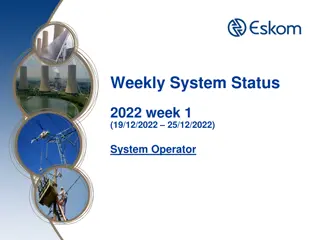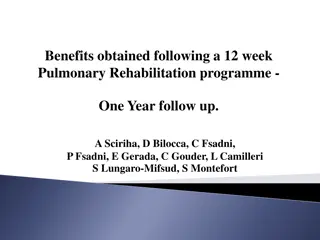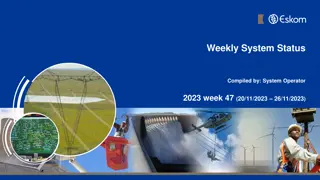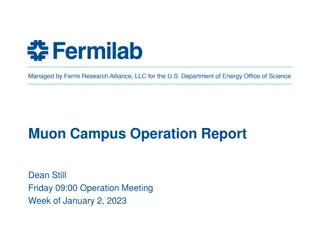
Kernel Mode and Privilege Levels in Operating Systems
Explore the significance of kernel mode, privilege levels, and the role of the kernel in managing system resources. Learn about the kernel's access control, memory management, and boot sequence to grasp the core functionalities of modern operating systems.
Download Presentation

Please find below an Image/Link to download the presentation.
The content on the website is provided AS IS for your information and personal use only. It may not be sold, licensed, or shared on other websites without obtaining consent from the author. If you encounter any issues during the download, it is possible that the publisher has removed the file from their server.
You are allowed to download the files provided on this website for personal or commercial use, subject to the condition that they are used lawfully. All files are the property of their respective owners.
The content on the website is provided AS IS for your information and personal use only. It may not be sold, licensed, or shared on other websites without obtaining consent from the author.
E N D
Presentation Transcript
What did we talk about last time? Process memory Multiprogramming
The kernel runs with full access privileges to everything The kernel controls: Physical memory File system I/O devices It handles power disruption and people attaching USB devices Jobs of the kernel Resource manager: Giving access to hardware when needed Control program: Handling errors and access violations Because it has to work consistently, the kernel doesn't change much over the years
The current privilege level (CPL) is a 2-bit value set in x86 CPUs Also called a ring Ring 3 is user mode Ring 0 is kernel mode The other two rings aren't used When in kernel mode: All memory addresses can be accessed Some special CPU instructions like halting the CPU or invalidating the cache can be executed Some normal CPU instructions work differently
Kernel Inaccessible! Kernel memory exists in the virtual memory of every process The kernel has all the normal memory segments but also a stack for every process User mode code cannot access the kernel space Bits are set in the CPU marking space as kernel-only Otherwise, malicious code could access everything And badly written code could do crazy stuff Stack Heap Data Code
The kernel is loaded during the boot sequence CPU executes firmware stored in non-volatile storage Older BIOS system Or newer UEFI system Firmware finds a boot loader, linked to by a special part of a hard drive or SSD or similar GRUB is a common Linux bootloader BOOTMGR is for Windows BootX is macOS Some boot loaders allow dual-booting, the ability to choose which OS to start The boot loader finds the file with the kernel in it and calls its main() function The kernel takes over and does everything else
The kernel can be invoked in two different ways System call: A user mode program wants to do something (like open a file) that requires OS involvement Somewhere in the library, a special trap instruction will ask the kernel to do something Interrupt or exception: Interrupts are hardware events that cause the kernel to react, like clicking a mouse Exceptions are software events that notify the kernel of a problem, like a segmentation fault This kind of exception isn't the same as an exception in Java, although the Java exception can be triggered by an OS exception
A mode switch is when the ring changes from user mode to kernel mode The user-mode process has no idea this is happening After each instruction executes, there's a chance that a mode switch happened, causing the kernel to handle an interrupt One of the challenges of writing OS code is that parts of it have to be written in a way that doesn't cause exceptions
User-mode processes can do normal CPU operations Add, subtract, multiply, divide Test for equality They can't do anything outside the CPU on their own Read or write hard drive data Send messages over the network To do these things, processes make system calls, asking the kernel to do the operation
In assembly, a special trap instruction triggers a mode switch so that the kernel will start doing stuff The x86 trap instruction is syscall The kernel checks to make sure that the process has all the necessary privileges to do the operation first After the system call, the kernel runs the sysret instruction, returning to user mode Many system calls are referred to by the C functions that are called to run them, even though those functions just do set up before running the real system call For example: write()
A given OS has a fixed number of system calls You can't just add or remove them willy-nilly In Linux, each one has a number as well as a name The number is what matters, but the name makes it easier to talk about C functions that wrap system calls are the same as the system calls without sys_ in front C function write() wraps the sys_write() system call Because C is a low-level, systems language, a lot of standard library functions directly wrap systems calls A lot of other functions provide more features but eventually end up calling system calls printf() has all kinds of formatting options, but it ultimately calls write()
The 64-bit Linux kernel has more than 300 system calls These are just a few common ones: System Call Number Purpose read write nanosleep exit kill uname gettimeofday sysinfo ptrace 0 Read from a file descriptor 1 Write to a file descriptor 35 High-resolution sleep (units in seconds and nanoseconds) 60 Terminate the current process 62 Send a signal to a process 63 Get information about the current kernel 96 Get the system time in seconds since midnight, January 1, 1970 99 Get information about memory usage and CPU load average 101 Trace another process's execution
You can call a specific system call using the syscall() function Its first parameter is the system call number, and the others depend on the system call For example, a basic Hello, World program can call syscall() with arguments: 1 System call number for write() 1 File descriptor for stdout message Pointer to "Hello, world\n" 13 Number of bytes to write
#include <unistd.h> char *message = "Hello, world\n"; int main (void) { syscall (1, 1, message, 13); // Write message syscall (60, 0); // Exit process return 0; // Unreachable }
The lives of processes can be modeled with a state diagram, as in Assignment 2 A process goes into different states depending on events Rough outline: When a process is created, there's a new virtual memory instance Process code is executed until the halt instruction is reached Process is destroyed and resources it was using are released by the kernel All processes have a parent process (except for the init process)
Processes are, of course, created when you run a program from the command line However, you can also create processes from within a program, using calls to special functions The fork() function creates a new process that's exactly the same as the current process The exec() function allows you to replace the current process with another program Each process has a unique ID, its process ID or PID getpid() returns the PID of the current process getppid() returns the PID of the current process's parent process
The fork() function is pretty crazy! When you call it, the process you're inside of keeps running And another process spawns at exactly the same point in code Both processes have exactly the same memory layout The only difference is that fork() returns the child PID for the original process and 0 if you're the process that just got forked pid_t child_pid = fork (); if (child_pid < 0) printf ("ERROR: No child process created\n"); else if (child_pid == 0) printf ("Hi, I'm the child!\n"); else printf ("Parent just gave birth to child %d\n", child_pid);
Finish process lifecycle Files
Finish Assignment 1 Due tonight by midnight! Start on Assignment 2 Look over Project 1 Read section 2.6






















